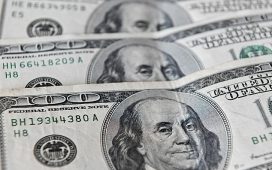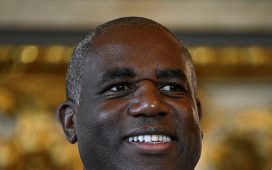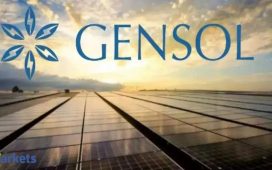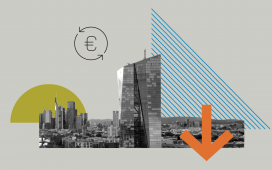Unlock the Editor’s Digest for free
Roula Khalaf, Editor of the FT, selects her favourite stories in this weekly newsletter.
Sam Bankman-Fried said he was “very surprised” in October 2022 to learn about the $8bn of customer deposits his private trading firm Alameda Research owed to his FTX crypto exchange, giving new details in testimony on Friday of the companies’ dramatic collapse.
In a day of gruelling testimony, Bankman-Fried offered his account of FTX’s implosion, acknowledging he had made “mistakes” but implying that his closest employees and friends had kept him in the dark about the scale of the hole until weeks before his crypto empire came crashing down.
The former crypto entrepreneur told jurors in New York that he only understood “pieces” of the full financial state of his companies, as he took the stand in federal court to defend himself against accusations that Alameda drained customer money from FTX, leading to the exchange’s bankruptcy last November.
Bankman-Fried, the one-time paper billionaire who faces decades behind bars if convicted on the fraud charges against him, will be cross-examined by prosecutors next week. He has pleaded not guilty.
Wearing a grey suit and purple tie, he calmly talked the jury through the founding of his two companies — FTX and an affiliated trading firm, Alameda Research — with college friends from MIT and former colleagues at New York trading firm Jane Street Capital. The jury has heard testimony from some of them, including Gary Wang, Nishad Singh and Caroline Ellison, who are co-operating with the prosecution.
The witnesses had testified to multiple conversations with the former chief executive in the months before the companies collapsed in which they discussed the $8bn liability created because Alameda had received FTX customer deposits into its bank accounts before the exchange set up its own accounts.
He contradicted those accounts, saying he only learned the size of the gap when he looked it up in a new version of the company database — which he was given access to in October 2022. Until then, he thought Alameda’s total debts to FTX were around $2bn, he said.
Even after the discovery, he said he still thought Alameda would “be good for it” since the trading firm “had plenty of asset value to be able to cover the liability”.
Earlier in the day Bankman-Fried said he believed Alameda could do “anything” with money it borrowed from FTX provided “risks were being managed”, whether it was to “buy muffins” or “pay business expenses”.
His claim that he did not have a full picture of his own companies’ finances until weeks before their demise has been critical to his defence. Friday’s testimony added new specifics to his account.
His lieutenants had testified that he directed them to increase the raid on customer money in June 2022 in order to repay Alameda’s third-party lenders in the midst of the wider crypto crash. He said it was Ellison who suggested it “probably made sense” to repay the loans, and that he had assented without knowing about the $8bn liability.
Defence lawyer Mark Cohen also tried to show the onslaught of decisions and information his client had faced as chief executive of the fast-growing exchange. Bankman-Fried said that he worked 12 hours on a “light day” and 22 hours on a “heavy day”, and received hundreds of Signal chats. He said he aimed to have only 60,000 unread emails, but “I didn’t usually succeed”.
Bankman-Fried testified that secret special privileges that Alameda enjoyed on FTX had been created by Wang and Singh to help the trading firm provide liquidity on the exchange — and that he did not know the details at the time.
He also cast blame for Alameda’s collapse on Ellison. He testified that he had urged her to hedge the trading firm’s debt-fuelled bets on rising crypto prices. He said she told him she was “looking into doing so” but never did — ultimately costing the firm about $10bn.
He said it had been Ellison’s idea to send Alameda’s lenders a balance sheet that concealed its massive debts to FTX, one of seven alternative versions prosecutors had shown to the jury. He said he had only “briefly” discussed the document with her.
The testimony briefly touched upon Bankman-Fried’s “on-again, off-again” relationship with Ellison, which he said ended for good in 2022 because “she wanted more from [the relationship] than I was able to give”.
He added that he did not “have the time or the energy” to live up to Ellison’s expectations, and that relationships were “not something I have been great at”.
He had given a preview of his testimony, without the jury present, on Thursday, answering questions on a number of issues so the judge could decide whether the topics were admissible as evidence as part of the defence’s case.
On Friday morning, Judge Lewis Kaplan, who is overseeing the case, ruled that Bankman-Fried could not answer questions designed to elicit testimony in which he claims he was following the advice of lawyers when implementing certain policies at FTX and Alameda.









